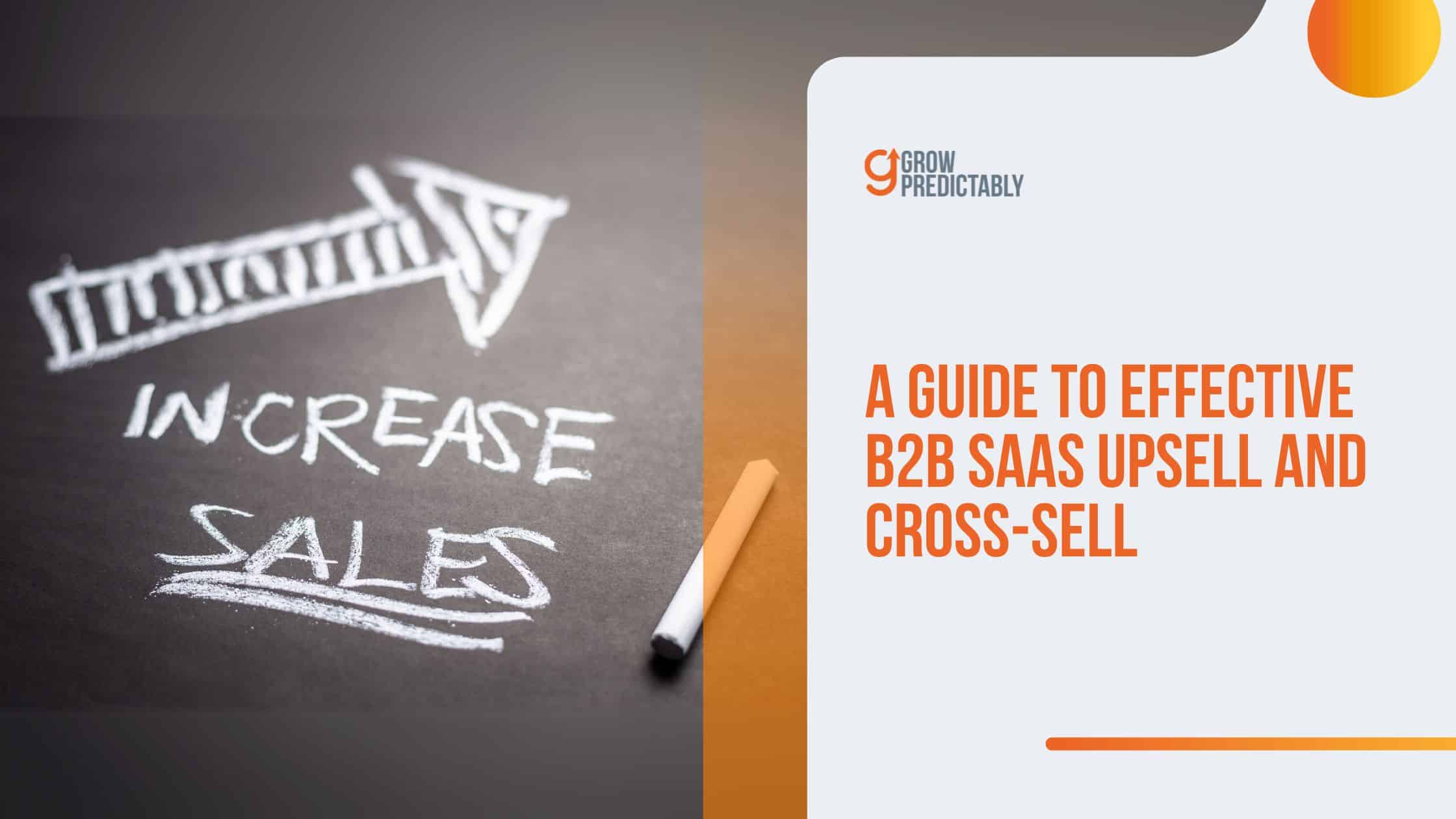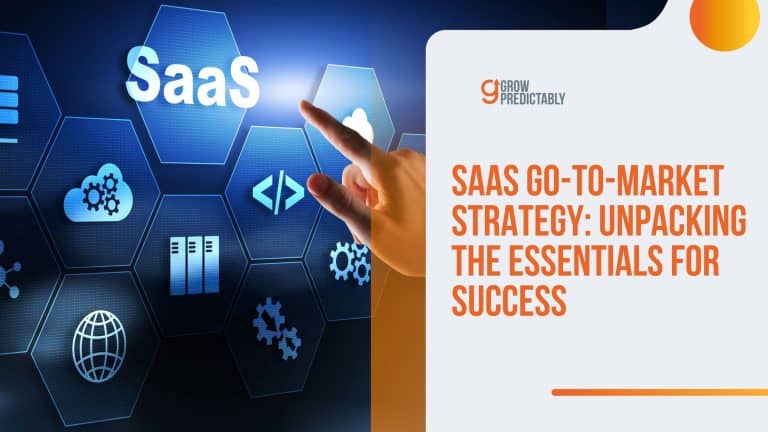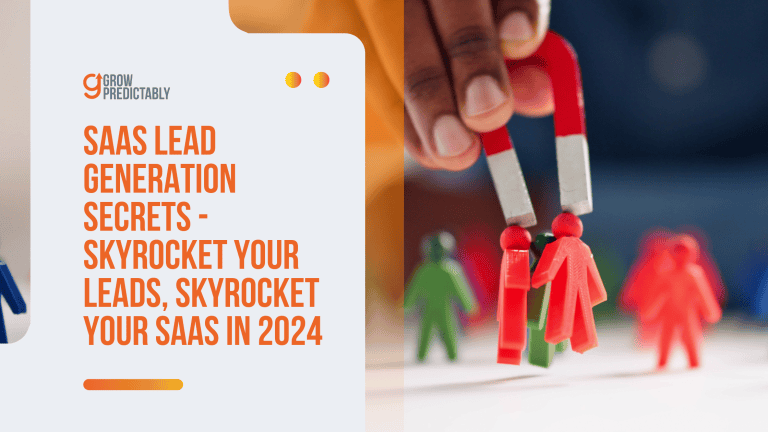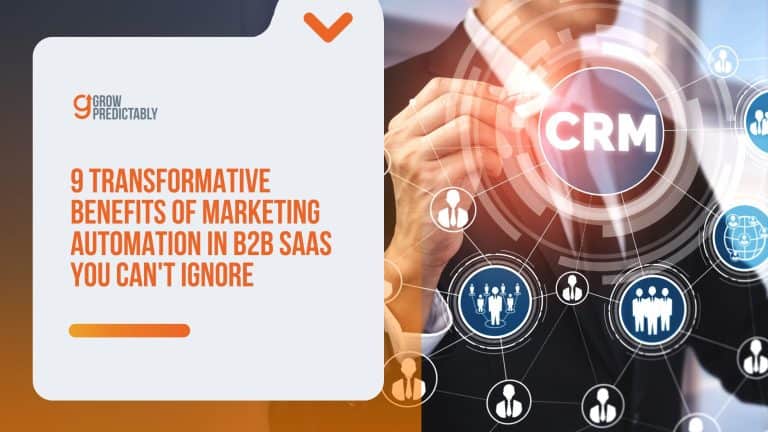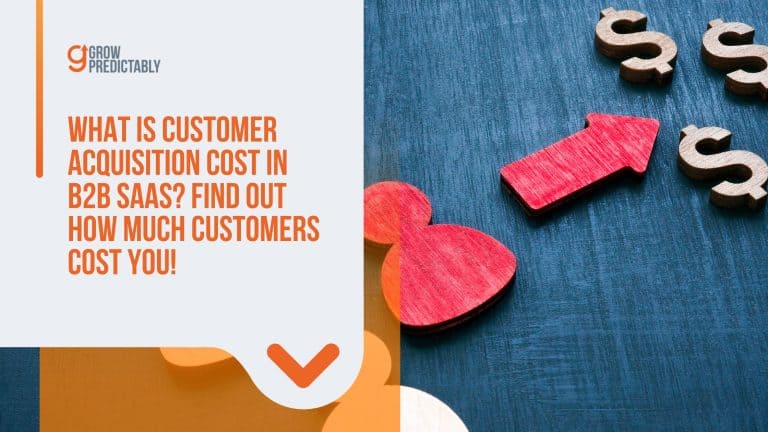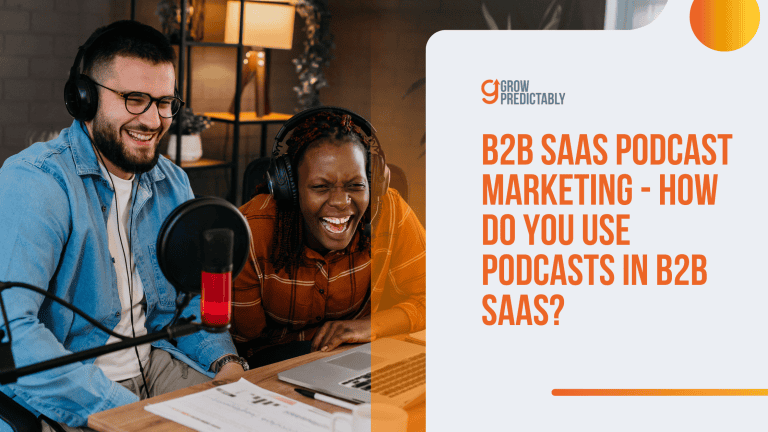A Guide to Effective B2B SaaS Upsell and Cross-Sell
You’ve probably been told that B2B SaaS upsell and cross-sell is all about pricing or timing.
Wrong.
Most SaaS companies fail here because they don’t deeply understand their customers.
The good news?
Fixing your approach is easier than you think—and it starts with identifying your customer avatar and understanding which additional features they need.
Why are customer avatars so critical, and how do they drive stronger upsell and cross-sell strategies?
Let’s talk about it.
Understanding Upselling and Cross-Selling
According to Salesgenie, sales teams prioritizing upselling and cross-selling activities achieve 50% higher quota attainment.
However, most B2B SaaS companies miss major revenue opportunities because they mix up upselling and cross-selling!
Here’s what they really are and why they matter for your growth.
What is Upselling?
Upselling is when you help customers upgrade to a more premium version of what they already use.
Think of it like upgrading from economy to business class – same core service, better features.
- Moving from basic to premium plans
- Upgrading to higher-tier features
- Increasing user seats or capacity
- Expanding usage limits or quotas
Real Upselling Examples:
- Basic plan to Pro plan
- 5 users to 25 users
- Standard support to Priority support
- Basic analytics to Advanced analytics
The best upsells solve problems customers are already feeling.
When done right, it’s like handing them the solution they’re actively looking for.

What is Cross-Selling?
Cross-selling is offering additional, complementary products that enhance your core solution.
It’s like buying a phone and adding AirPods – different product, better overall experience.
- Adding new standalone products
- Including complementary tools
- Offering specialized add-ons
- Providing integration solutions
Cross-Selling in Action:
- Adding a reporting module to analytics software
- Including team chat with project management
- Adding document storage to workflow tools
- Including training with software licenses
Each cross-sell makes your main product more valuable and harder to replace.
Why Both Matter for Growth
Your expansion strategy isn’t just about revenue – it’s about transforming your entire business trajectory.
Let’s break down what happens when you master strategic upselling and cross-selling.
1. More Money (Obviously)
When you nail your expansion strategy, revenue explodes in multiple ways.
This isn’t about random feature pushing – it’s about systematic value delivery that compounds over time.
- Average Contract Value jumps 2-3x through strategic upsells
- Expansion revenue often exceeds new customer revenue by year 3
- Customer Lifetime Value multiplies through systematic cross-selling
- Net Revenue Retention climbs above 120% with proper expansion execution
The key is systematic implementation.
Random upsells don’t create these results.
You need a precise expansion playbook that matches solutions to needs, thereby increasing customer lifetime value.
2. Better Retention (The Hidden Gold Mine)
Let’s talk about the most overlooked benefit of strategic expansion: creating loyal customers.
Every successful upsell or cross-sell makes your product more sticky.
It literally transforms your retention metrics.
- Multi-product customers show 65% lower churn rates
- Premium tier users renew at 2.5x higher rates
- Cross-sold customers report 3x higher satisfaction scores
- Feature expansion correlates with 2x higher product adoption
Think about it – the more problems you solve, the harder it becomes to switch away from your solution.
Each expansion creates deeper roots in your customer’s operation.
3. Happier Users (For Real Though)
Here’s what nobody talks about: strategic expansion actually makes your customers more successful.
When you time expansions right, you’re solving real problems at exactly the right moment.
- Users report 40% higher productivity after strategic upgrades
- Teams achieve goals faster with properly timed feature expansion
- Support tickets decrease by 30% for customers using multiple products
- Implementation success rates double for strategic bundle adopters
This isn’t about pushing features – it’s about matching solutions to evolving needs.
Your expansion strategy becomes a core driver of customer success.
The best part?
These benefits compound over time.
Each successful expansion makes the next one more likely.
Your customers become more receptive to additional value because you’ve proven you can deliver results.
Identifying B2B SaaS Expansion Opportunities Through Customer Avatar Canvas
Most companies blindly push upgrades without understanding their customers’ needs and fail to leverage customer insights.
To build a successful expansion strategy, you need to start with a deep understanding of your customer base using the Customer Avatar Canvas framework.

1. Understanding the Customer Avatar Canvas Framework
The Customer Avatar Canvas transforms surface-level customer data into actionable intelligence by breaking down your ideal customer across key dimensions:
- Demographics: Measurable characteristics like age, income level, job title, company size, industry, and location that shape your customer’s worldview
- Psychographics: Hidden motivators including values, beliefs, priorities, and pain points that drive decisions
- Behavior Patterns: How they evaluate solutions, make purchasing decisions, and interact with their tech stack
- Goals and Aspirations: Both immediate targets and long-term objectives that influence buying behavior
2. Applying the Canvas to Identify Expansion Signals
With your Customer Avatar Canvas in place, you can begin identifying authentic expansion opportunities by mapping customer behavior against your understanding of their needs and motivations.
Key signals to monitor include:
- Usage patterns that align with known pain points
- Feature requests that connect to documented aspirations
- Team growth that matches expected company trajectories
- Integration needs that reflect industry-specific workflows
- Support questions that indicate evolving use cases
3. Leveraging Canvas Insights for Segmentation
Armed with deep customer understanding from your Canvas, you can create meaningful segments based on expansion readiness.
Rather than relying on generic metrics, consider:
- Current plan utilization in context of industry norms
- Team size and growth relative to company maturity
- Use case complexity mapped to business objectives
- Feature adoption levels compared to success patterns
- Engagement scores weighted by role and influence
4. Creating Personalized Expansion Strategies
Your Customer Avatar Canvas insights should drive customized expansion approaches for each segment.
This means:
- Tailoring upgrade messaging to specific psychographic profiles
- Timing offers based on known decision-making processes
- Packaging features that align with documented pain points
- Providing ROI metrics that matter to different personas
- Supporting expansion with relevant content and resources
5. Monitoring and Refining Your Approach
The Customer Avatar Canvas isn’t static – it should evolve as you gather more customer intelligence.
Continuously update your understanding by tracking:
- Changes in feature usage patterns
- Shifts in support ticket themes
- Evolution of feedback patterns
- New integration requests
- Emerging use cases
Remember: Successful expansion isn’t about pushing upgrades – it’s about identifying moments when customers need more value and delivering it in a way that resonates with their specific needs and goals.
The Customer Avatar Canvas provides the framework to make this possible in a systematic, customer-centric way.
10 Key Strategies for B2B SaaS Upsell and Cross-Sell
Most B2B SaaS companies leave money on the table because they haven’t systematized their upsell and cross sell strategies.
Your existing customers are your biggest asset – they already trust you, they’re already getting value, and they’re primed for growth.
But timing is everything.
Let’s break down exactly what works when it comes to expanding customer relationships.
Upselling Mastery
Upselling isn’t about pushing premium features.
It’s about matching expanding customer needs with the right solution level.
Let’s start with these core strategies to increase your average order value.

1. Value-Based Comparison
Forget feature lists. Focus on business impact.
Make the value jump between tiers crystal clear.
This is about showing customers exactly what they gain by upgrading.
- Build clear ROI models for each tier
- Document success patterns of upgraded customers
- Create comparison tools focused on outcomes
- Develop value visualization tools
2. Personalized Upgrade Paths
Generic upgrade suggestions don’t work.
Your recommendations need to align perfectly with each customer’s growth trajectory.
Make upgrade paths feel like natural evolution, not forced steps.
- Track usage patterns indicating upgrade readiness
- Monitor growth signals across customer segments
- Create personalized upgrade roadmaps
- Build predictive recommendation models
3. Strategic Trial Periods
Let customers experience premium value firsthand.
Structure trials that demonstrate clear benefits while gathering actionable feedback.
This isn’t about time-limited access – it’s about proving premium value.
- Design targeted feature trials
- Build success measurement frameworks
- Create trial-to-upgrade pathways
- Develop trial activation playbooks
4. Lifecycle-Based Upgrade Timing
Timing transforms good recommendations into perfect solutions.
Your upgrade suggestions should align with natural growth moments in the customer journey.
- Map key upgrade triggers in customer lifecycle
- Track leading indicators of upgrade readiness
- Build proactive outreach programs
- Create targeted timing algorithms
5. Feature Bundling Strategy
Premium features should work together to deliver exponential value.
Your bundling strategy needs to make the combined impact obvious and irresistible.
- Package features that enhance each other
- Create clear value stories for each bundle
- Design smooth implementation paths
- Build bundle success playbooks
Cross-Selling Strategy Fundamentals
Your current customers already trust you.
A customer success manager can play a crucial role in this process by proactively engaging with new users and stakeholders to identify upsell opportunities.
They’re already getting value.
Now it’s time to help them get even more results through targeted cross-selling efforts.

6. Complementary Product Mapping
Most SaaS companies randomly suggest products, hoping something sticks.
That’s leaving money on the table.
Instead, you need a systematic approach to identifying which products naturally enhance each other’s value.
This is about creating obvious connections that make customers think “of course I need both” through effective cross sells.
- Create detailed maps of product synergies based on actual customer usage data
- Build clear value stories for each product combination
- Develop systematic suggestion triggers based on usage patterns
- Document specific workflow improvements when products are used together
7. Timing-Based Recommendations
Anyone can blast out product suggestions.
Winners know exactly when to present the right solution.
It’s about matching customer readiness with perfect timing.
Your timing strategy should be based on real customer behavior, not guesswork.
- Track key usage milestones that indicate readiness for additional products
- Monitor customer success signals that create new solution needs
- Build automated triggers for timely recommendations
- Create a scoring system for recommendation timing
8. Strategic Bundle Creation
Your bundles need to solve real problems, not just group random products together.
Each bundle should tell a clear story about additional value.
When customers see your bundles, they should immediately understand how they’ll benefit.
- Package products that naturally complement each other’s core value
- Structure pricing to make bundles obviously attractive
- Create clear ROI narratives for each bundle
- Design implementation paths that ensure bundle success
9. Post-Purchase Follow-Up System
Random check-ins don’t work.
You need a structured system that connects with customers at key value moments.
This is about building a predictable engine for expansion opportunities.
- Create milestone-based follow-up sequences
- Build trigger-based outreach programs
- Develop usage-based conversation starters
- Implement systematic success check-ins
10. Educational Content Strategy
Stop selling and start teaching.
Show customers exactly how they can extract more value through additional solutions.
Your content should make product connections obvious without being pushy.
- Develop practical guides showing integrated product use
- Create ROI calculators for combined solutions
- Build real customer success stories
- Design implementation playbooks for multiple products
This isn’t theory – these are the exact strategies that drive predictable expansion revenue.
Master them, and you’ll transform your growth trajectory.
The key is systematic implementation – start with one strategy, perfect it, and then move to the next.
Each strategy builds on the others, creating a compound effect on your expansion revenue.
The best part?
These strategies work together.
Your educational content supports your bundle creation.
Your timing recommendations enhance your follow-up system.
Your product mapping informs your value-based comparisons.
It’s a complete system for sustainable growth.
Tools and Resources for Upselling and Cross Selling
Let’s cut straight to what matters in your SaaS business expansion tech stack.
The right tools transform random acts of selling into a systematic revenue engine.
Most companies overcomplicate this.
Here’s exactly what you need.
Core Technology Stack
Your expansion strategy needs a rock-solid foundation.
These aren’t just random tools – they’re the backbone of systematic revenue growth.
- CRM System – Command center for customer relationships and expansion opportunities
- Analytics Platform – Deep insights into usage patterns and expansion signals
- Email Automation – Systematic outreach based on behavioral triggers
- Customer Feedback Tool – Direct pipeline to customer needs and expansion readiness
Each tool serves a specific purpose in your expansion engine.
Skip any of these, and you’re flying blind.
Integration Strategy
Tools in isolation are useless. Your tech stack needs to work as one cohesive system.
Here’s the integration blueprint that drives results:
- CRM + Analytics Integration
- Real-time behavior tracking
- Custom event monitoring
- Usage-based segmentation
- Expansion opportunity alerts
- Email + CRM Connection
- Behavior-triggered campaigns
- Personalized upgrade sequences
- Response tracking automation
- Engagement scoring
- Feedback Loop Integration
- Automatic account tagging
- Feature request tracking
- Satisfaction monitoring
- Expansion readiness scoring
Performance Monitoring Framework
Systematic tracking transforms data into action.
Your weekly monitoring system should focus on these core metrics:
- Expansion Metrics
- Upsell conversion rates
- Cross-sell success rates
- Feature adoption velocity
- Revenue per account growth
- Health Indicators
- Account engagement scores
- Product usage trends
- Customer satisfaction levels
- Expansion readiness signals
Role-Based Responsibilities
Clear ownership drives results.
Each team needs specific expansion responsibilities:
- Account Management Focus
- Health score monitoring
- Opportunity identification
- Expansion timing optimization
- Relationship development
- Sales Operations Charter
- Data quality maintenance
- Performance reporting
- System optimization
- Process automation
- Customer Success Mission
- Usage pattern analysis
- Satisfaction measurement
- Adoption acceleration
- Value realization tracking
- Product Team Objectives
- Feature adoption monitoring
- Usage analytics review
- Upgrade path optimization
- Value demonstration
Remember: Your tech stack is only as good as the processes behind it.
Start with core tools, perfect your processes, and then expand systematically.
Every addition should solve a specific problem or unlock a clear opportunity.
Best Practices for B2B SaaS Expansion Revenue
Most SaaS companies know timing and value matter, but they mess up the execution.
Let’s break down the exact practices that separate winners from the rest.
1. Master the Timing Game
Timing transforms good offers into irresistible opportunities.
Your expansion strategy needs precise timing triggers baked into your process.
Here’s what actually works:
- Behavioral Triggers
- Feature usage saturation points
- Team size growth indicators
- Workflow complexity signals
- Success milestone achievements
- Relationship Indicators
- Support interaction quality
- Product feedback engagement
- Success meeting participation
- Implementation milestone completion
- Business Context Signals
- Growth stage transitions
- New market expansion moves
- Team restructuring events
- Budget cycle alignment
Build your expansion timing around these signals.
When multiple indicators align, that’s your perfect moment to introduce additional value.
2. Value Communication That Drives Action
Clear value communication transforms resistance into enthusiasm.
Skip the feature lists – focus on business impact.
Here’s the framework:
- Value Story Components
- Specific problem resolution
- Quantifiable outcome improvement
- Workflow enhancement details
- Resource optimization impact
- Clarity Principles
- One core value per message
- Concrete example inclusion
- Clear next step definition
- Simple decision framework
- Confusion Elimination
- Limited option presentation
- Clear differentiation points
- Specific use case alignment
- Straightforward pricing structure
Remember: The goal isn’t to be overwhelmed with options.
It’s to present the perfect solution at the perfect moment.
Your value communication should make the decision obvious.
3. Relationship Development Foundation
Strong relationships transform selling into helping, thereby enhancing customer satisfaction.
Build these practices into your customer interactions:
- Trust Building Actions
- Regular value check-ins
- Proactive problem solving
- Success celebration sharing
- Strategic guidance offering
- Connection Strengthening
- Industry insight sharing
- Best practice education
- Peer success stories
- Strategic planning support
Your expansion strategy should feel like a natural extension of your ongoing partnership.
When you nail these practices, customers thank you for selling them more.
FAQs
Transform Your B2B SaaS Expansion Strategy
Your expansion strategy will transform how you grow.
But here’s the thing – you need to start implementing now.
Not next quarter.
Not when you have the perfect tech stack.
Now.
Here’s your action plan:
- Start with one upselling strategy from our list. Perfect it before moving to the next.
- Build your timing triggers based on the behavioral signals we covered.
- Implement the core tools needed to track and act on expansion opportunities.
- Focus your messaging on clear, quantifiable value delivery.
Remember: Your existing customers are your biggest growth opportunity.
Every day you wait is revenue left on the table.
The companies that master expansion revenue win.
Period.
It’s not just about growing revenue – it’s about building sustainable, predictable growth that compounds over time.
Ready to transform your expansion strategy?
Let’s connect.
Your customers are waiting for more value.
Time to deliver it!

